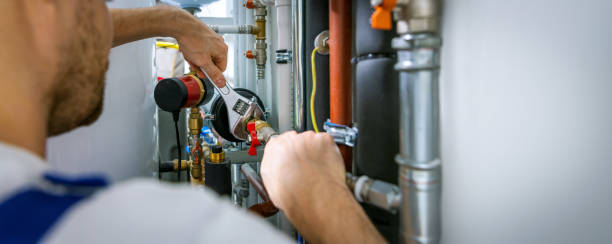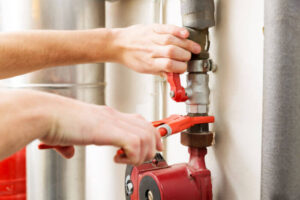Buying your first home is an exciting milestone, but it comes with responsibilities that many first-time buyers may not anticipate—especially when it comes to plumbing. While it’s easy to focus on décor, furnishings, and interior upgrades, the plumbing system is the backbone of a well-functioning home. Understanding some essential plumbing tips can save you time, money, and stress down the line. Here’s what first-time homeowners should keep in mind to ensure their plumbing stays in top shape.

Understanding the Basics of Your Home’s Plumbing System
Before diving into maintenance and troubleshooting, it’s important to understand how your home’s plumbing system works. Your home’s plumbing is essentially a complex network of pipes that supply clean water and remove waste. It involves three main components: the water supply system, the drainage system, and the fixtures or appliances connected to both. Knowing where your main water shut-off valve is located and understanding which pipes are for hot or cold water can make a big difference in the event of a plumbing emergency.
If you’re not sure how to identify these elements, a home inspection report or a quick consultation with a licensed plumber can provide helpful insights. Familiarizing yourself with the layout can help you respond effectively if something goes wrong.
Keep an Eye on Water Pressure
Water pressure might not be top-of-mind, but it plays a crucial role in your home’s comfort and plumbing health. High water pressure can cause wear and tear on pipes, faucets, and appliances. If the pressure is too low, you might experience weak showers or slow-filling washing machines. A water pressure gauge can help you monitor it, and a plumber can install a pressure-reducing valve if needed.
New homeowners often overlook water pressure until it becomes a nuisance. Taking the time to check it when you first move in can help prevent future problems. If your shower head blasts like a firehose or your pipes bang when turning taps on or off, it’s worth investigating further.
Watch for Leaks Early On
Small leaks may seem harmless, but they can escalate quickly into major problems. They can cause mold growth, wood rot, and increased water bills. Common areas to monitor include under sinks, around toilets, behind washing machines, and near your water heater. Discoloration, warped cabinetry, or a musty odor are all warning signs that water may be leaking somewhere out of sight.
Fixing leaks promptly is critical. Even a slow drip can waste gallons of water over time. As a new homeowner, make it a habit to check for leaks during your regular cleaning routine. This simple habit can save you hundreds in repairs later.
Be Careful with What You Flush or Pour Down the Drain
It’s tempting to treat the toilet and sink drains as catch-alls for waste, but they are more delicate than many people realize. Items like wet wipes, feminine hygiene products, grease, coffee grounds, and food scraps should never go down drains or toilets. These materials can clog your pipes and even damage your septic or sewage system.
First-time homeowners often learn this the hard way. Instead of relying on chemical drain cleaners, which can damage your pipes, consider using a sink strainer or garbage disposal with care. Also, establish a household rule for what can and cannot be flushed or drained to prevent costly backups.
Know the Age and Condition of Plumbing Fixtures
Not all homes come with updated plumbing systems. If your new home is older, it may have outdated fixtures or even pipes made of materials that are no longer considered safe or efficient, such as galvanized steel or polybutylene. It’s wise to get a plumbing inspection to assess the age and integrity of your pipes and fixtures.
Even if you’ve purchased a newly built home, you should still inspect faucets, showerheads, and water heaters to ensure everything is functioning efficiently. If your water heater is over ten years old, it may be time to consider a replacement to avoid sudden failures. Likewise, upgrading faucets and toilets to more efficient models can save you water and reduce your utility bills.
Winterize Your Plumbing Before Cold Weather Hits
 If you live in a climate where temperatures dip below freezing, winterizing your plumbing system is crucial. Frozen pipes can burst and lead to significant water damage. Make sure outdoor faucets are drained, hoses are disconnected, and exposed pipes are insulated. Inside the home, keep your thermostat set to a consistent temperature and open cabinet doors to let warm air circulate around pipes.
If you live in a climate where temperatures dip below freezing, winterizing your plumbing system is crucial. Frozen pipes can burst and lead to significant water damage. Make sure outdoor faucets are drained, hoses are disconnected, and exposed pipes are insulated. Inside the home, keep your thermostat set to a consistent temperature and open cabinet doors to let warm air circulate around pipes.
First-time buyers who are unfamiliar with cold-weather plumbing risks may not realize the damage that freezing temperatures can cause. Taking a few preventive steps before winter can protect your plumbing and your peace of mind.
Don’t Ignore the Sewer Line
The sewer line is out of sight and often out of mind, but it’s a critical part of your plumbing system. Tree roots, clogs, or structural damage can cause backups that are both unpleasant and expensive to fix. If you notice frequent slow drains, gurgling toilets, or bad odors from your drains, it could signal a problem with your sewer line.
Consider having a camera inspection of your sewer line before finalizing the purchase of an older home. It might not seem like a priority compared to other homebuying expenses, but it can help you avoid thousands in repair costs later. For peace of mind, a professional plumber can assess the line’s condition and recommend solutions if issues are found.
Have a Trusted Plumber on Call
As a new homeowner, it’s important to build a relationship with a reliable plumber before an emergency strikes. Plumbing issues rarely happen at convenient times. Whether it’s a burst pipe in the middle of the night or a broken water heater on a holiday weekend, having someone you trust to call can make all the difference.
Ask neighbors for recommendations or look for licensed professionals with good reviews in your area. Some plumbers offer service plans or maintenance programs, which can be a cost-effective way to ensure your plumbing remains in good shape year-round.